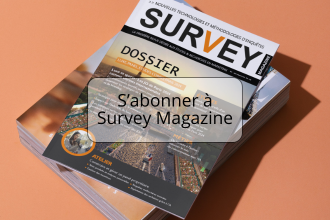December 2017 sees the non-existing restaurant “The Shed at Dulwich” as a number one place to dine in London! This fictitious diner, set up as a hoax by a reporter, is perceived by TripAdvisor users as being ahead of other legitimate places. The consequence of being listed as top rated restaurant in London – everyone wants to book a table – and it is inundated with reservation requests.
Whist the hoax was an experiment it proves the point that a) it is possible to game the system and there are always creative minds that can circumvent the official process and b) which is most important for marketers – customer reviews on third party websites have an increasingly important role in developing trust in a brand. The end result of positive reviews is that others trust them and use this data for their decision making.
The role of Social Media is increasingly getting importance in the customer journey to purchase decisions. Usually it is one of the first touch points with the prospective customer that provides stimulus to explore a product or a service. However, websites such as TripAdvisor, Amazon and others thrive on the quality and quantity of past customer reviews. This is recognized by marketers who develop specific review tactics.
It is clear in the customer notice on amazon for example, that : “As sellers and manufacturers, you are not allowed to review your own products, nor are you allowed to negatively review a competitor's product.” (Amazon Seller Central February 2019).
How do you get reviews?
One of the tactics that increases the number and quality of reviews is to pay someone to post a review of your products and services. This practice of being paid for a review is nothing new – mystery shopping is an old tactic used by many market researchers. However, with mystery shopping it is clear that customers are asked for detailed opinions and these customers are then rewarded for the information through a small compensation. The information is usually kept private within the confines of the market research process.
However, with the increasing role of social media organisations recognize that keeping their information private is no longer of interest and being able to have more positive reviews than your competition can also have a positive impact on the sales. A quick search on Facebook groups for amazon review groups shows that there are a number of opportunities for brand to find their reviews. The individual is expected to link up with a brand and then when a purchase and a review are made – it is expected that the reviews are positive – then the full price for product and packaging is refunded to the reviewer.
There are also official processes to increase your reviews with Amazon for example through “Early Reviewer Program”. Brands are offered this option as “The Early Reviewer Program encourages customers who have already purchased a product to share their authentic experience about that product, regardless of whether it is a 1-star or 5-star review.” (Amazon Help and Customer Service, 2019). It is clear that the quality of the star rating as part of this review is not the objective of the Early Reviewer exercise and it also has several restrictions for those who want to start such as process.
Remind customers that you want to hear their thoughts
Once a customer dined in a restaurant and once they are offered a bill, a number of organisation remind customers that they really appreciate the feedback. In particular for those who are delighted with their experience and want to thank the staff for good customer service in addition to leaving a tip they can be reminded that a review on say TripAdvisor would be very welcome. Again, here it is important to not cross the guidelines of reviewing platforms. For example Amazon does not allow direct incentivising of customer reviews with discounts etc. Discounts offered for future purchases and regardless of the review comply with these kind of reviewing guidelines.
The ultimate impact of these reviews is that now market researchers have to develop new skills in identifying if a review is fake or real. The key challenge to this is that they do look identical and can be also written by the same person! Now when collecting data and cleaning it for analysis an important new step needs to be added – that is to establish the likelihood that certain information is not real and namely a fake review.
What are the hallmarks of a fake review?
The simple answer is that there are a number of really good professional reviewers who do like reviewing things. Micro-jobs websites such as www.fiverr.com offer anyone the opportunity to share their service of writing a review of something. One of the most detailed review types is unboxing and if you search for example on fiverr for the term “unboxing” you will find currently 74 willing individuals who offer their services in exchange for payment! These are people who in other words professional in what they are doing and through their hobby they are offering content which could help in the sales process of your products or those of your competitors.
The key assumption that we have to approach any market research now is that this information is fake unless proven otherwise. This cynic approach can help us to change the mindset to the world of online reviews. It is most evident in us on the 1st of April, where we always wonder if something sounds too good to be true. The realisation that social media and online reviews is nothing else but someone else’s opinion it is important to read each review and look for evidence of real user for example:
a) Go beyond the headline number of stars. The depth to which the review
is conducted and supported with evidence is really a good indicator of
truth. This is done most effectively through video reviews such as
unboxing. Even when someone is saying something is great, but they do
not have the imagery to prove it – chances are it is actually not so
great. A picture says more than a thousand words, and this is even more
evident with video content. If possible watch the video and see if there
is enough evidence to back up the claims made.
b) See for other reviews of the user. Do they have a range of
opinions on things or do they just think that everything is great. Yes,
we do have individuals who have lower expectations from things, but it
does help when they actually offer a critical view.
c) Can you see objectivity in the review content? Do they offer a
balanced review? For example, are they pointing out negative as well as
positive points? A written review should ideally list practical
explanations and evidence of what makes them happy and what makes them
disappointed with a product or a service. For example, for someone
waiting for a product to be shipped 10 days is a really long delivery
time but someone else it is quick!
d) When were all the reviews done? The pattern of review dates is
also important. If you see a lot of reviews and then no reviews later
chances are the marketing budget was used up and the sellers might have
stopped the process. A more spread out and seasonally adjusted reviewing
pattern is to be expected.
e) The consistency of review content. Most service-oriented reviews
depend on people and their subjective opinions of the work of other
people. Within reason it is possible that the same restaurant chef might
have a bad day or be on holidays and being replace with someone else and
hence the same dish could be great and bad the next day. However, the
opinions should be mainly consistent and not offer opposite extremes of
views. Sometimes the mid-range reviews can offer a more balanced opinion
that actually resembles reality.
There are some websites that give you a choice to read reviews from a range of sources. For example https://reviewmeta.com/ focuses on the analysis of amazon reviews and provides a more balanced view of what the review distribution is and how these reviews can be used and interpreted. Similar tools that use machine learning, will have to be developed for any subject that is using reviews or social media based evaluations in order to make sure that the evaluation of data is really being done based on the most reliable data set.
Key takeaways:
• Online reviews are easily faked, no platform is able to police their
reviews 100% even where proof of purchase is necessary, there are ways
around them!
• Approach research in online reviews on social media with the
attitude that they are fake and look for evidence that they are real
• If you want to be more certain about something the most effective
way is to try it yourself or if needed commission your own mystery
shoppers without any expectations apart from their real opinions




































